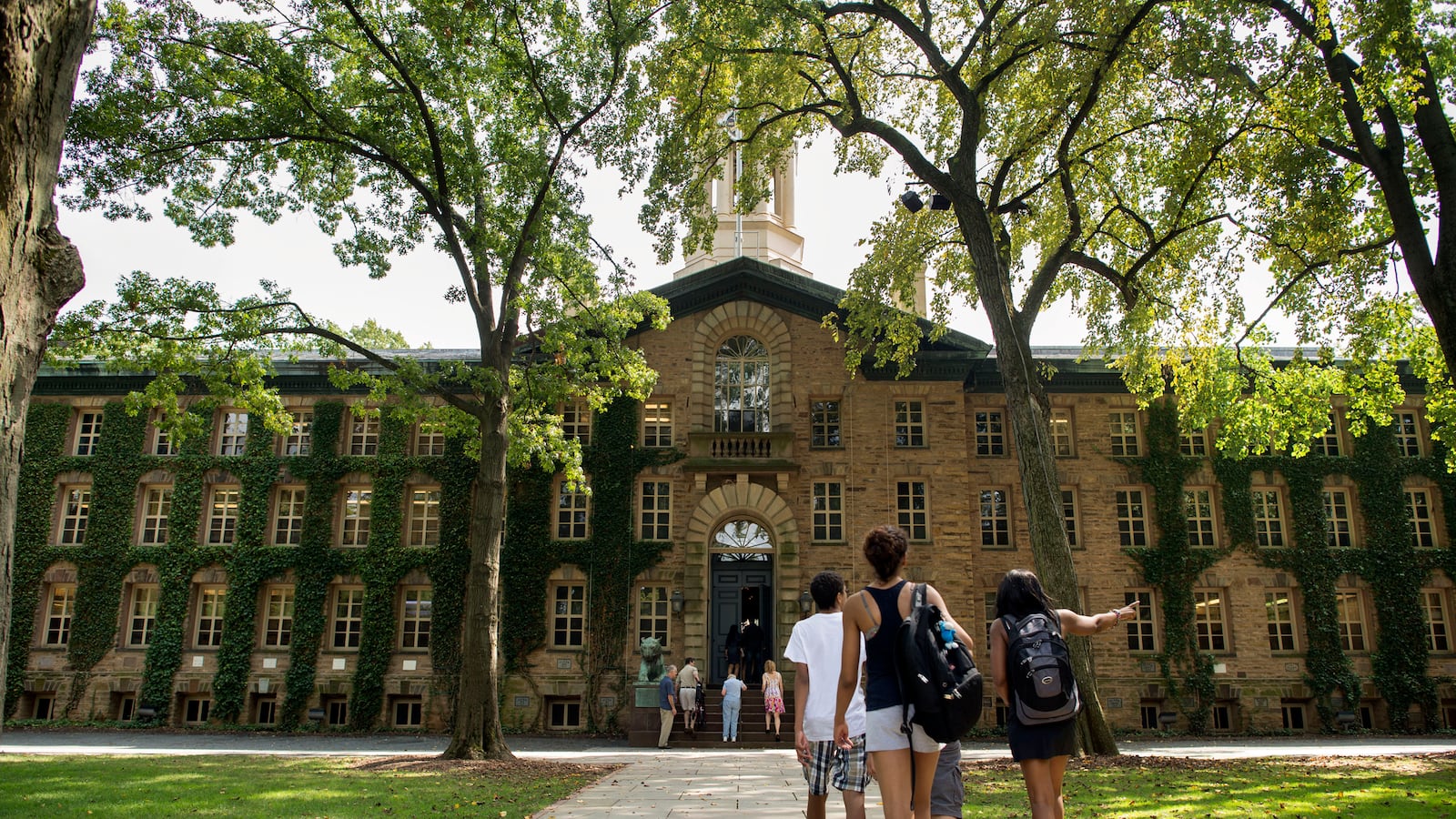UPDATE: University officials said Monday that they would make a vaccine for the type B meningococcal bacteria—which hasn’t been approved for use in the U.S.—available to Princeton students, though not mandatory.
Princeton University is in the midst of an odd, slow-motion outbreak of an unusual strain of the dreaded disease meningococcal meningitis. The situation is sufficiently dire that the Princeton Board of Trustees met over the weekend to decide whether to recommend that students receive a vaccine that is available in Europe and Australia but not approved for use in the United States.

The bacterium Neisseria meningitidis causes between 800 and 1,500 cases annually in the U.S., killing many . Despite the “meningo-” prefix, meningococcus causes two distinct clinical diseases, each accounting for about half the illnesses. One is meningitis, an infection of the lining of the brain, that is fatal in about 10 percent of cases. The other is meningococcemia, which occurs when the bacteria enter the bloodstream and cause overwhelming organ failure. Despite antibiotics, this form kills more than a third of affected people. In both syndromes, early signs include fever and profound malaise.
The Princeton outbreak began in March and has simmered along in the ensuing eight months. Thus far seven cases have been reported, with no fatalities; the most recent was diagnosed last week. The cause of the outbreak—why now, why here, why them—remains unclear. That is the usual situation with outbreaks, until they become either bad enough for the source to become obvious or else fade into the distance, unsolved—as likely will happen at Princeton.
The unusual aspect of this particular outbreak is that a vaccine against Neisseria meningitides is available in the U.S. and is required by most colleges. But that’s where it gets tricky. The U.S. vaccine provides immunity against the four strains, more accurately referred to as “sub-types” or “serotypes,” that cause almost all of the disease in North America: A, C, W-135, and Y. The problem is that, worldwide, there are two additional sub-types that cause human disease (add B and X to make six). The Princeton outbreak involves sub-type B. And yes, the sub-type numbering system for meningococci is inexplicable: A, B, C, W135, X, and Y.
So the recommended and only FDA-approved “MCV-4” meningococcal vaccine given to incoming students covers the big four sub-types only, just about everything except the sub-type that has found its way to Princeton. It is not a surprise that the disease did so—meningococcus is a bacterium carried in the throat by 5 percent to 15 percent of normal people walking down the street. Usually it just sits there. In the very unlucky few, these same bacteria incomprehensibly invade and cause disease rather than simply go along for the ride. Why this happens is an area of great scientific speculation and investigation but remains utterly unknown.
It is not hard to imagine, though, given the easy travel of students from here to there, that a person from an area with lots of sub-type B could have found his or her way to the Princeton campus and somehow set off the current cascade of infections. The means of transmission—kissing, probably sharing utensils or at least living in close quarters—surely are occurring at Princeton and every other college campus. The college’s earlier attempt to interrupt spread, not quite at the level of vaccine, was to distribute red drinking cups emblazoned with the anti-socialist message “Mine. Not Yours” to discourage sharing and presumably other types of scholastic intermingling.
The Princeton outbreak also marks the third time meningococcus has been in the news recently. First, health authorities in the Kingdom of Saudi Arabia are requiring that any pilgrim making the Hajj this year show evidence of meningococcal vaccination in order to enter the country. This mandate has in turn created a market so tempting that one vaccine manufacturer has produced a pork-free, or halal, version. The vaccine is required because so many pilgrims arrive from countries in the so-called Meningitis Belt, the large swath of sub-Saharan Africa with 450 million people spread across 20 countries including Chad, Sudan, and Ethiopia. The rates of carriage and invasive disease of the bacteria there are dramatically higher than anywhere else in the world.
In addition, a small but disturbing outbreak of meningococcus sub-type C, also rather slow in unfolding, among gay men in both New York and Los Angeles that caused substantial concern earlier this year. The public health response, similar to that taken in Saudi Arabia, was widespread vaccination of persons at risk, an intervention that appears to have been extremely effective in stopping spread of the infection.
Which is the point. The only reassuring aspect of Princeton’s current major health scare is that the remedy is vaccination. It reminds us that once, vaccine was the good guy: I refer you to Balto the dog, who is immortalized in Central Park for his role in curbing a diphtheria epidemic in Alaska early last century. (Note for the very curious: Balto died in 1933 in Cleveland, where his stuffed body is on display at the Natural History Museum. ) In these anti-vaccine days, Princeton’s embrace of vaccine is indeed heartening. So, too, is the concept of sane people sitting in a room to measure risk, assess benefit, and produce a decision based on cold facts, not hot air. If only such an approach could spread, Balto-like, to the reclaimed swamplands southwest of Princeton where politician-Americans roam. That would truly be a rescue worthy of a bronze statue.





